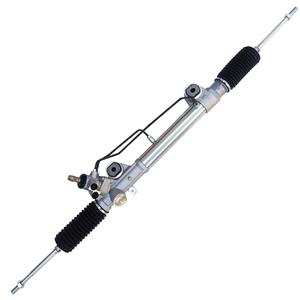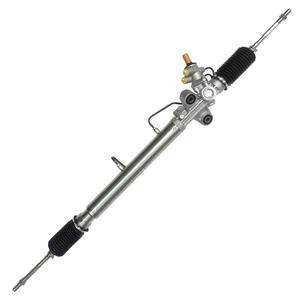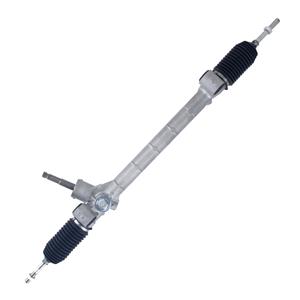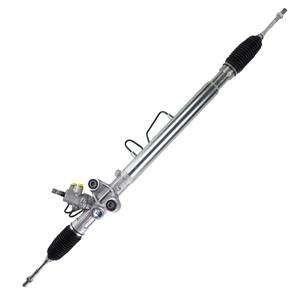Is stop-leak harmful to car power steering?
The power steering system is an important part of modern cars. It greatly reduces the driver's physical exertion when operating the vehicle, especially at low speeds and when parking. However, like any mechanical system, power steering systems will have problems over time, especially leaks. Leaks usually appear in places such as hoses, seals, or power steering pumps. When car owners encounter power steering fluid leaks, they usually choose to repair them, but some car owners also choose to use a product called "stop-leak" to try to fix or temporarily control the leak in this way.
However, what exactly is a stop-leak? Does it have a good or bad impact on the power steering system? This article will answer these questions in detail and explore the role and potential harm of stop-leak in the power steering system of the car.
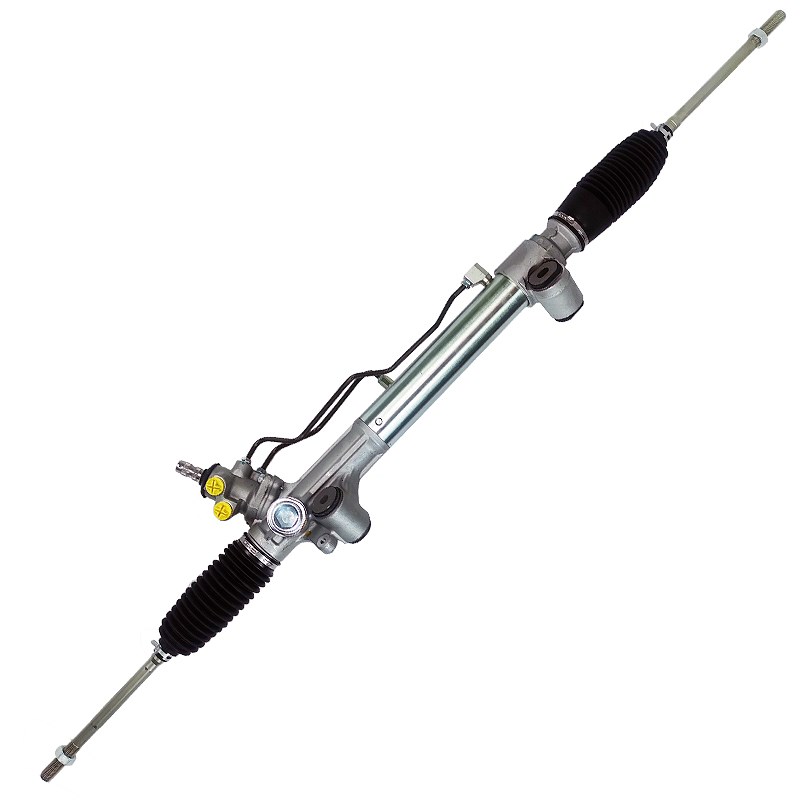
What is a stop-leak?
A stop-leak is a chemical agent that is usually designed to repair small leaks in the car system. It uses a specific chemical reaction to temporarily or in some cases permanently block the leak point. Stop-leak agents are widely used in the cooling system, engine seals, transmission oil circuits, and power steering systems of cars.
The working principle of leak stoppers is usually based on the chemical components reacting with the materials in the system. When encountering a leak point (usually some small cracks or holes), these chemicals will condense with the air, liquid or seal material to form a film to seal the leak. This process can temporarily relieve or reduce the leak problem, especially when the owner cannot perform a full repair in a short time, it is regarded as an emergency measure.
Common types of leak stoppers include:
1. Liquid leak stoppers: Usually added directly to the system, mixed with the liquid and repaired by flowing.
2. Granular leak stoppers: Contains tiny particles that form a physical barrier to block the leak by depositing at the leak.
In power steering systems, leak stoppers are mainly used to block power steering fluid leaks caused by aging seals, cracks in hoses or wear of pump components.

Is leak stopper harmful to power steering systems?
Although leak stoppers may be effective in repairing power steering fluid leaks in the short term, long-term use or reliance on leak stoppers to solve the problem may bring a series of adverse consequences to the vehicle. The following aspects explain the potential hazards of leak-stopping agents in power steering systems.
Potential system blockage
The working principle of the power steering system is to provide steering assistance through the flow of hydraulic fluid. This system relies on the smooth flow of liquid between the pump, hose, and rack. If leak-stopping agents are added to the power steering fluid, it may mix with particles in the liquid and gradually form solid particles. As the liquid flows through the various components of the system, these particles may be deposited in pipes, filters or other narrow fluid channels, causing system blockage.
Once some parts in the system are blocked, the flow of liquid will be blocked, resulting in a decrease in steering assistance or even complete failure, affecting the vehicle's handling and safety. Worse, if this blockage occurs inside the pump, it may cause the power steering pump to be damaged due to overload.
Accelerated aging of seals
Although the purpose of leak-stopping agents is to repair leaks, especially for the aging of seals, their chemical composition may react with the sealing material and accelerate the aging of seals. The seals in the power steering system are mainly used to prevent liquid leakage and maintain hydraulic pressure. If the elasticity and structure of the seals are damaged by the chemical composition of leak-stopping agents, the leakage problem may be aggravated.
Long-term use of leak-stoppers may cause seals to swell or harden, further compromising the system's seal. While leak-stoppers may appear effective in the short term, over time, seal degradation will lead to larger leaks and even more expensive repairs.
Impact on Power Steering Fluid Performance
The performance of power steering fluid is critical, as it needs to lubricate, dissipate heat and transmit hydraulic pressure. Chemicals in leak-stoppers may change the properties of the fluid, affecting its lubricity and fluidity. This change can increase wear on various components within the system, especially the power steering pump and the contact area between the rack and pinion. The operation of the power steering pump is highly dependent on the lubricity of the fluid, and if the fluid cannot perform its lubrication function properly, the service life of the pump will be shortened and repair costs will increase.
In addition, if the physical properties of the power steering fluid change, its performance at high and low temperatures will also be affected. For example, the fluid may become too thin at high temperatures, resulting in insufficient pressure, and it may become too viscous at low temperatures, preventing the system from working properly.
Leak-stoppers only provide temporary relief
Another problem with leak-stoppers is that they only provide temporary relief for power steering fluid leaks, not a fundamental solution. Whether it is due to aging seals or broken hoses, the use of leak stoppers is only a stopgap measure. Ultimately, the source of the leak is still there and may reappear after a period of time, even more serious than before.
Especially for serious leaks, leak stoppers are almost ineffective. Once the leak point is large or the system is highly damaged, the leak stopper will not be able to completely block the leak, but may delay the necessary repair time, causing the problem to worsen.
What are the precautions for using power steering leak stoppers?
Although leak stoppers are not the best solution for power steering system leaks, they do play an emergency role in some special cases and help car owners deal with vehicle problems in a short period of time.
Emergency repair measures
In some cases, car owners may not be able to make repairs immediately, such as in remote areas or places that are difficult for repair shops to reach. The use of leak stoppers can temporarily alleviate the problem of power steering fluid leakage and help car owners continue to drive to the nearest repair point. However, this is only a short-term solution, and car owners should arrange for a thorough repair as soon as possible to avoid causing greater damage to the vehicle.
Use in moderation
The amount of leak-stopping agent used should strictly follow the recommendations in the product manual. Excessive use may aggravate the system blockage problem and accelerate the aging of the seals. If the owner chooses to use leak-stopping agent, it should be added in an appropriate amount according to the severity of the leak and the actual needs of the vehicle, and the status of the power steering fluid should be checked regularly.
Communicate with professionals
Before deciding to use leak-stopping agent, it is best for the owner to consult a professional automotive repair technician. The technician can evaluate the feasibility of using leak-stopping agent based on the specific situation of the vehicle and give more professional advice. If the leakage problem is more serious, professional technicians usually recommend repairing or replacing the relevant parts as soon as possible instead of relying on leak-stopping agent.
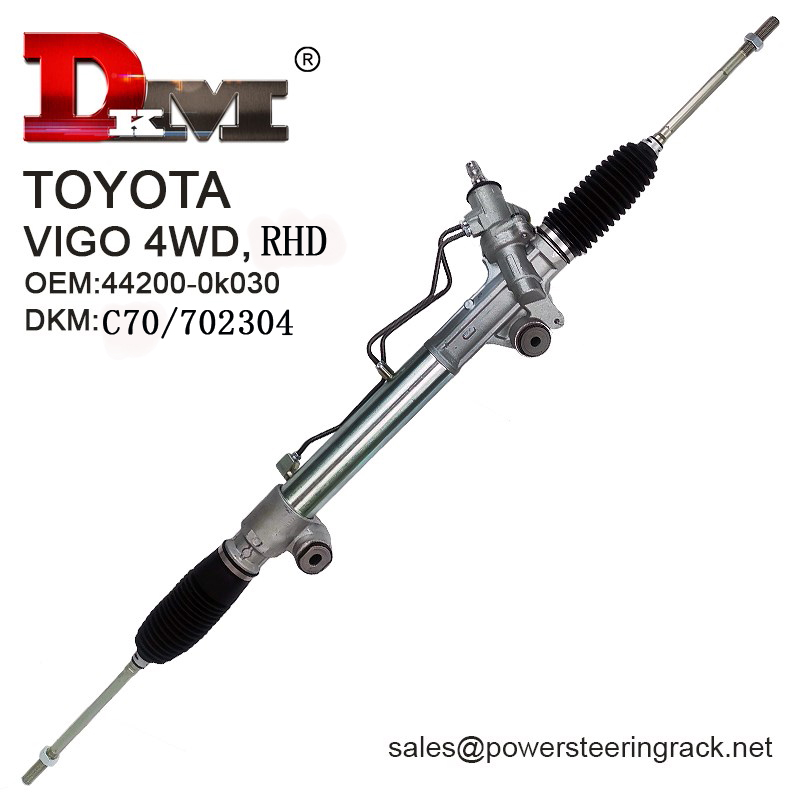
How to deal with power steering fluid leakage?
Although leak-stopping agent can be used as a temporary solution in an emergency, in the long run, repairing or replacing damaged parts is the best solution to deal with power steering fluid leakage. Here are some effective treatment suggestions:
Check the power steering fluid regularly
The owner should check the level and status of the power steering fluid regularly to ensure that the fluid is within the normal range. If the fluid level drops or the color of the fluid changes, it may indicate a leak or other problem, and the owner should conduct further inspection as soon as possible.
Replace aged parts in a timely manner
Components such as seals, hoses and pumps in the power steering system will gradually age and wear over time. Regular maintenance and replacement of these parts are key measures to avoid leakage problems. By replacing aged parts in a timely manner, car owners can effectively prevent leaks and extend the life of the power steering system.
Professional repairs
If the vehicle shows signs of power steering fluid leakage, the owner should take the vehicle to a professional auto repair shop for a comprehensive inspection and repair as soon as possible. Professional technicians can determine the root cause of the leak through inspection and take appropriate repair measures to ensure the normal operation of the vehicle.

